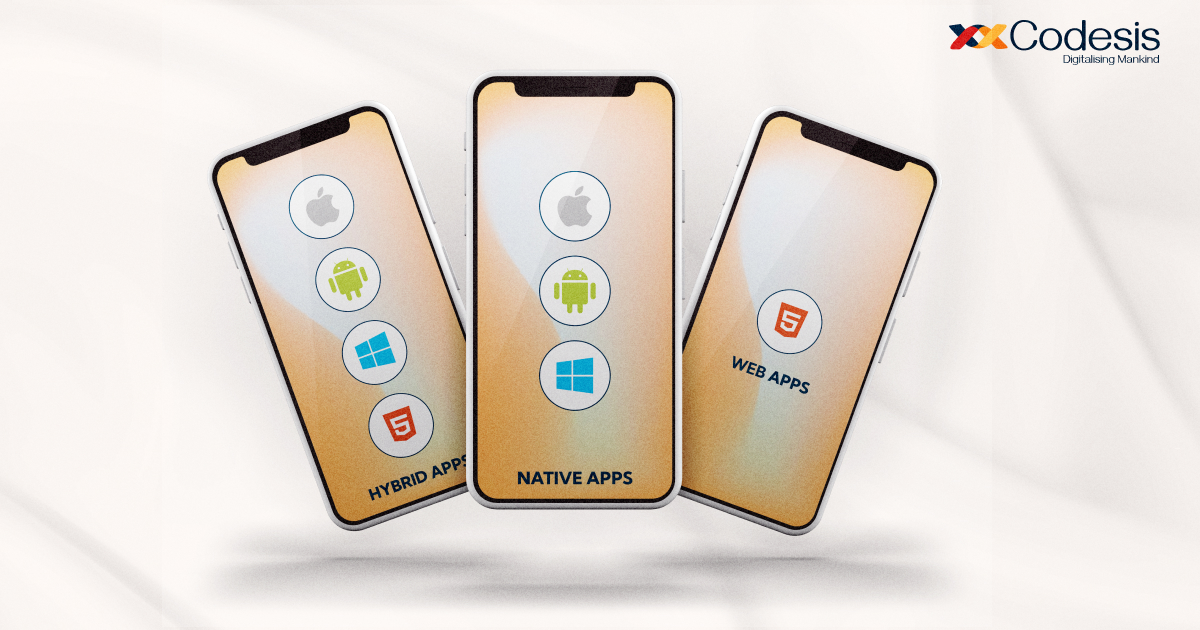
Post Views: 297 Why Cloud Platforms for Modern Apps Matter in 2025 Introduction Over the past few years, there’s been...

Android app development has become one of the most important parts of the current technology world. Businesses and developers are heavily focusing on Android apps to connect with millions of users around the world. As of now, Android holds the largest market share among other mobile operating systems like IOS and Microsoft. Android is powering more than 70% of mobile phones worldwide. This dominance and popularity of Android apps show why Android app development is critical for businesses looking to grow in this tech-dominated world.
In 2025, As mobile usage continues to grow, the demand for Android apps is expected to rise more. With more than 3.5 million apps already on the Google Play Store and more apps being added to the Play Store every day, The competition is a lot and tough but the opportunities are huge. Whether you are a business owner or a developer, If you want to succeed in the tech world you must understand the steps to build an Android app and how important it is for your success.
Well don’t worry about it, in this complete guide we cover everything you need to know about Android app development, from planning and designing to coding and launching the Android app and it also includes tips for optimising your app, maintaining it and making it stand out from the other apps.
Android app development will remain a top priority for businesses in 2025 because it provides companies access to billions of users. With a wide range of devices, from affordable smartphones to high-end gadgets, Android reaches all types of people with different interests. This diversity allows businesses to target particular audiences and build apps according to their needs and requirements.
Also, Android is an open-source platform which makes it easy for developers to customise apps and offer unique features that make them unique and have a USP stand out from others in the crowded market.
The user interface (UI) and user experience (UX) are very important parts of the success of any app. A well-designed app should always look amazing and be easy for users to use. You should start by planning your design carefully and focus on making the app layout clean, simple and user-friendly also use clear icons, and readable fonts and keep the brand colours consistent throughout the design of the app.
You must follow Android’s official design guidelines also known as material design. These guidelines help in creating a smooth and consistent experience for users. Make sure the app navigation is easy so that users can easily move between different screens and features. It is important to pay attention to details like button placement, animation, and responsiveness to make sure the app feels polished and professional for users.
Choosing the right programming languages, tools, and frameworks is very important for building a properly functional and reliable app. For Android app development, developers mostly use programming languages like Java and Kotlin:
The very famous ‘Android Studio is the official development tool for Android apps, which provides a comprehensive set of features for coding, testing, and debugging. You can also take advantage of libraries like Jetpack Compose to simplify UI creation and make the development process faster.
When writing your app’s code, focus on following best practices. This ensures your app is easy to maintain and update later. Write clean and modular code by dividing the app’s functionality into smaller, reusable components. Use meaningful names for variables and functions to make your code understandable.
Use version control systems like Git to track changes in your code and collaborate effectively with other team members. Platforms like GitHub or GitLab make it easy to store and manage your code online. Regularly commit your work to ensure you don’t lose progress.
Testing is one of the most important steps in Android app development. Before releasing your app, test it thoroughly to ensure everything works as expected.
Use automated testing tools like Espresso or JUnit to speed up the process and catch issues early. Additionally, ask real users to test the app to get valuable feedback on its usability.
When your app is ready, it’s time to publish it on the Google Play Store. First, prepare all the materials needed for submission:
Sign up for a Google Play Developer account and follow their submission process. Upload your app’s APK file, fill in the required details, and follow Google’s guidelines to avoid rejection. Once your app is live, monitor user reviews and ratings. Respond to feedback and release regular updates to fix bugs or add new features.
By following these steps, you can create a successful Android app that provides value to your users.
This means your app should automatically adjust its layout and features to fit any screen size or resolution. For example, buttons should not be too small or too big, and text should remain readable on all devices. Testing your app on different screen sizes before releasing it ensures that users will have a smooth experience, no matter what device they’re using.
Security is a top priority when developing an Android app because you want to protect your users’ personal information. Users trust your app with their data, and it’s your responsibility to keep it safe. Encryption is a process that turns data into a code, making it unreadable to unauthorized users. You should use encryption to protect sensitive information like passwords and payment details.
Additionally, using secure authentication methods like two-factor authentication (2FA) helps ensure that only authorized users can access their accounts. Implementing these security measures not only protects user data but also builds trust and credibility for your app.
Once your app is launched, your work isn’t done. Regular updates are essential to keep your app functioning well and relevant to users. Updates can fix bugs (technical problems that might cause the app to crash or not work properly), add new features, and improve performance. Regular updates also ensure that your app stays compatible with the latest Android versions.
New Android updates often come with new features and security improvements, so making sure your app works with them helps provide a better experience for users. By consistently updating your app, you show users that you care about improving their experience and keeping your app fresh.
Evernote is a great example of a popular and successful Android app used by millions of people around the world. It offers a variety of helpful features like easy note-taking, task management, and smooth synchronization across devices. These tools make it useful for students, working professionals, and anyone who wants to stay organized.
What makes Evernote stand out is its simple and user-friendly design. The app is easy to use, whether you’re quickly writing down an idea, making a to-do list, or organizing your work. Another big reason for its success is that the team behind Evernote listens to its users. They constantly update the app to improve it, adding new features based on what users want.
By focusing on what users need and keeping things simple, Evernote has become one of the most trusted apps in its category. Its ability to grow and stay relevant shows how much thought and care has gone into its design and development.
Android app development is a powerful way to connect with users and grow your business in 2025. By understanding user needs, planning effectively, and following the right development process, you can create apps that stand out in the crowded market.
Focus on delivering value to your users and keeping your app updated. Whether you’re building an app for your business or starting as a developer, Android offers endless possibilities to succeed. Choose a reliable partner like Codesis Technology to make your app journey smoother and more impactful.

Post Views: 297 Why Cloud Platforms for Modern Apps Matter in 2025 Introduction Over the past few years, there’s been...

Post Views: 280 Angular vs React: Which JS Framework Should You Choose? Introduction While working with JavaScript Frameworks you must...
Post Views: 323 Importance of Agile Methodology in Software Development Introduction Software development processes like Agile methodology have proven themselves...

Post Views: 317 Types of Mobile Applications: The Definitive Guide You Need in 2024 Introduction to types of Mobile Applications:...